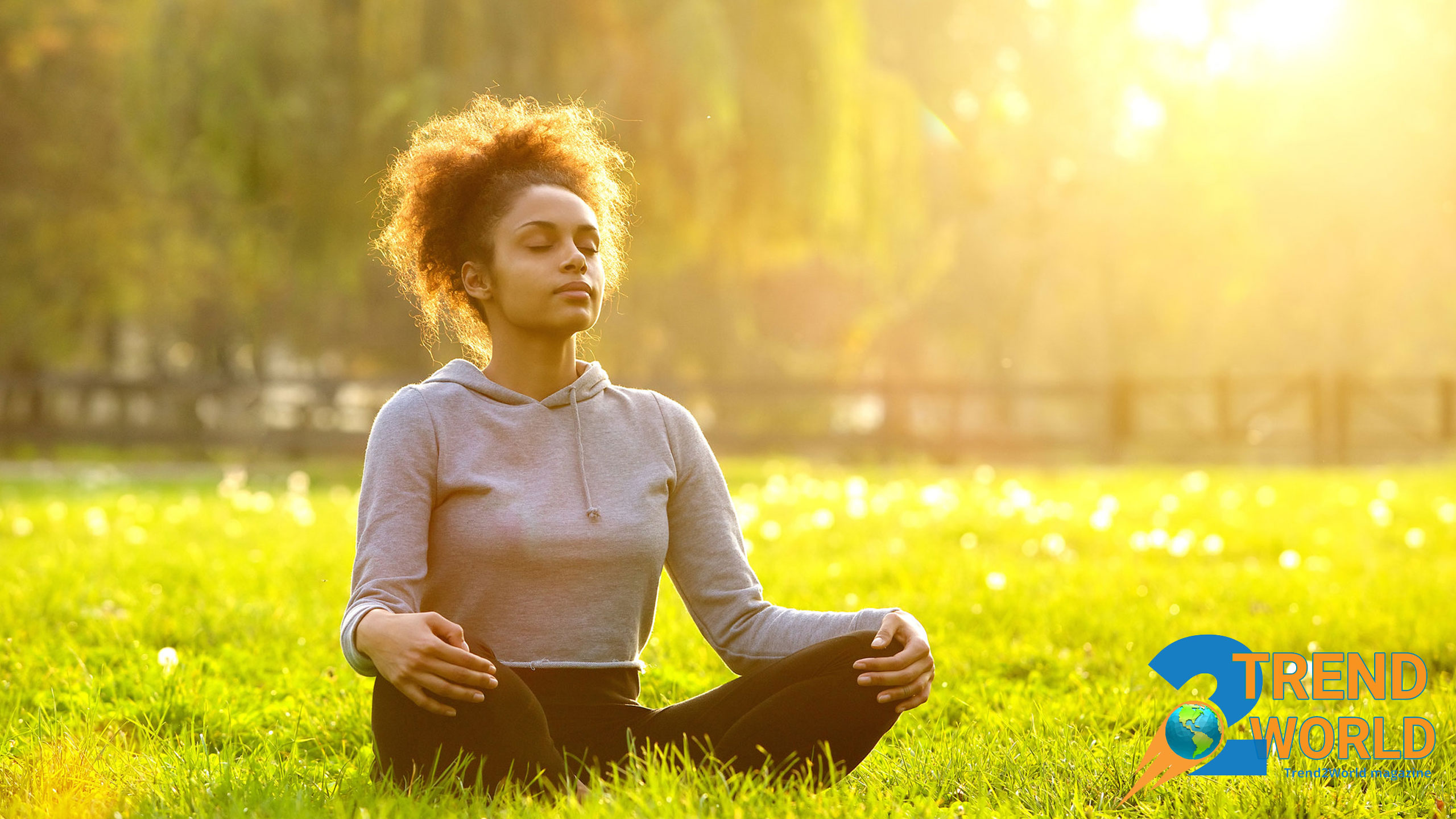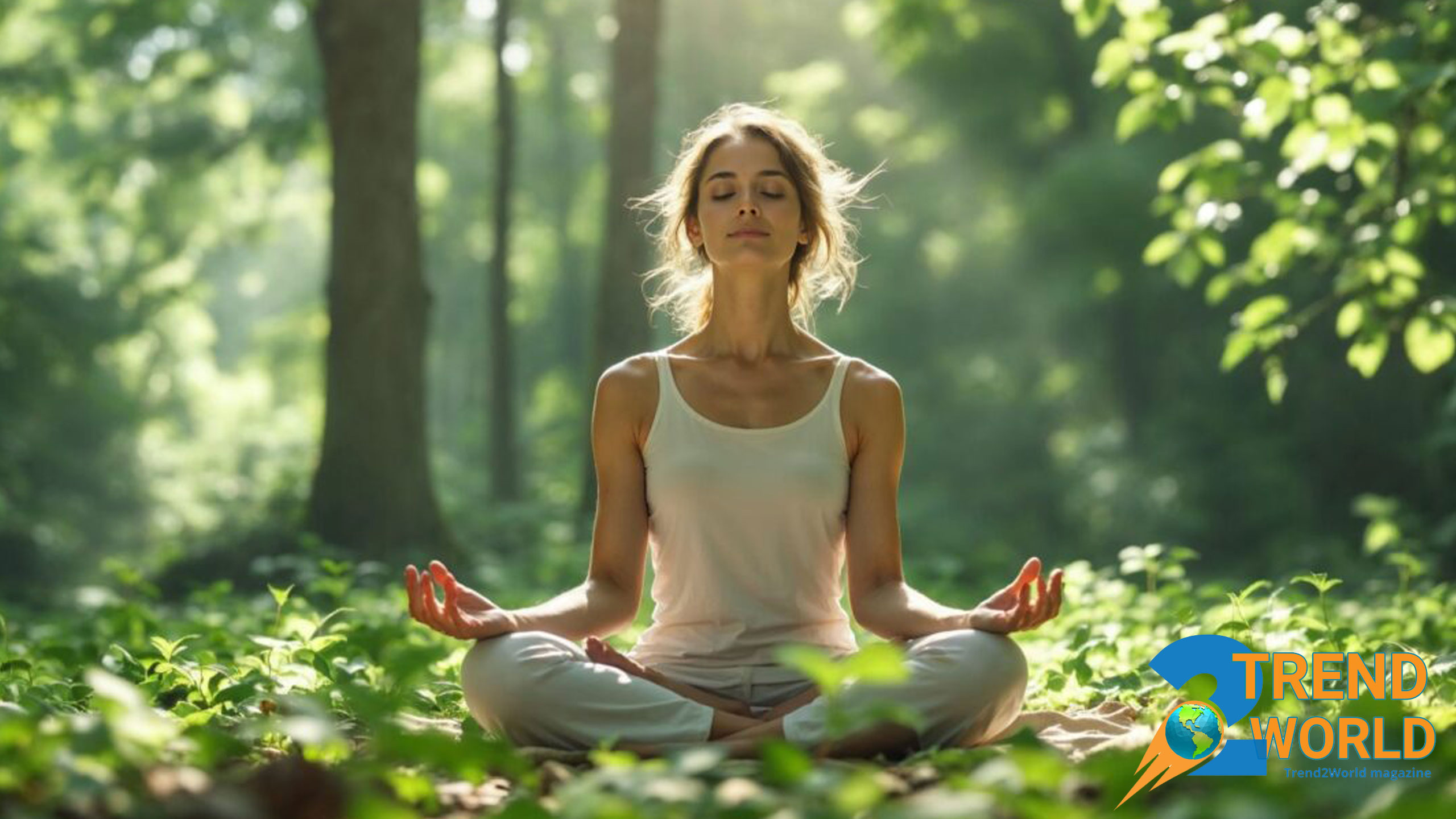- Deep Breathing
- Mindfulness Meditation
- Loving-Kindness Meditation
- Guided Visualization
- Walking Meditation
- Gratitude Meditation
Start Your Day with Calm: The Power of Morning Meditation
The Modern Struggle with Stress and Anxiety
In today’s busy and stressful world, many of us wake up every morning with mental pressures and feelings of anxiety. The early hours of the day—some of the most important moments for establishing a positive mindset—are often spent in a rush, stress, and scattered thoughts. Contrary to popular belief, simply waking up and starting daily activities does not provide the energy and calmness we need. Unconscious reactions and the flood of various thoughts not only affect our efficiency and concentration but also prevent us from enjoying the present moment, sometimes even making us forget about ourselves.
The Role of Morning Meditation
Morning meditation is a simple yet effective technique that can help you start your day with a calm and refreshed mind. Meditation, which means complete focus on the present moment and awareness of both inner and outer states, is a powerful tool for managing anxiety, stress, and everyday mental challenges. With just a few minutes of practice each morning, you can free yourself from negative thoughts, clear your mind of worries, and improve focus to better handle the day’s challenges.
The Simplicity and Accessibility of Meditation
Unlike complex or time-consuming methods, morning meditation does not require special equipment and can be practiced anywhere, at any time. Even if you have little time, just one or two minutes of meditation can help break free from mental chaos and relieve daily pressures.
Meditation as a Foundation for Daily Success
Starting your day with meditation lays a strong foundation for success. It helps you connect with yourself, increase self-awareness, and harness positive energy. Instead of being trapped in thoughts about the past or future, you can fully experience the present moment. When your day begins with a calm and focused mind, that sense of peace and satisfaction carries throughout the day, helping you handle challenges more effectively.
The Benefits of Morning Meditation for Everyone
Morning meditation is a valuable tool for all—whether you’re looking to reduce stress, improve focus, or boost motivation. In this article, we will introduce various morning meditation techniques to help you start your day with energy, calm, and clarity. These simple yet effective practices not only enhance mental well-being but also improve overall quality of life, guiding you toward a more balanced and fulfilling day.
Deep Breathing:

Introduction to Deep Breathing
Deep breathing is one of the most fundamental and effective relaxation techniques that humans have turned to since ancient times to create calm, improve focus, and control stress.
Deep Breathing in Therapeutic Practices
This method, due to its simplicity and immediate impact, is used in many therapeutic and mental health improvement approaches, including yoga, meditation, and mind-body therapies.
Deep Breathing in Modern Life
In the modern world, where stress and anxiety have become major issues due to the pressures of urban life, complex social relationships, and daily distractions, deep breathing techniques are recognized as an effective tool to combat these challenges.
Physiological Benefits of Deep Breathing
In addition to reducing stress and anxiety, deep breathing, by increasing oxygen flow in the body, can have a positive impact on brain function and vital systems. This simple practice not only helps to calm the mind but also, from a physiological perspective, can lower blood pressure, restore the heart rate to normal, and strengthen the immune system.
Long-term Benefits of Deep Breathing
However, the importance of deep breathing goes beyond its immediate effects. Regular practice of this exercise can lead to the development of a positive habit that aids in emotion regulation, increases stress management abilities, and even improves sleep quality.
Deep Breathing for Focus and Mindfulness
Moreover, deep breathing can be a powerful tool for enhancing focus and mindfulness when the mind is filled with scattered thoughts.
A Simple Solution for Mental Balance
In fact, in today’s busy and chaotic world, deep breathing can become a simple yet powerful solution for returning to inner calm and maintaining mental balance.
The stages of deep breathing:
How to Practice Deep Breathing
To begin deep breathing, find a calm and comfortable place. This could be a quiet room, an open space, or anywhere that helps you feel at ease. Sit or lie down in a relaxed position:
- If sitting, keep your feet flat on the floor.
- If lying down, stretch your body fully and relax your muscles.
Place your hands on your knees or abdomen to help you focus on your breathing. Before starting, take a few natural breaths to relax. Simply pay attention to your breath and clear your mind of distractions.
Step 1: Inhale Slowly
Decide that each breath should be deep and controlled. Breathe in slowly through your nose, allowing your belly to expand rather than just your chest. This ensures you are using diaphragmatic breathing, which is deeper and more effective than shallow breathing.
- Try to inhale for 4 to 6 seconds, filling your lungs fully and giving your body time to absorb oxygen.
Step 2: Hold Your Breath
Once your lungs are full, hold your breath for 2 to 4 seconds. Stay relaxed and avoid applying any pressure. The goal is to let your body absorb the oxygen naturally.
Step 3: Exhale Slowly
Exhale through your mouth in a slow, controlled manner. Your exhale should be longer than your inhale—about 6 to 8 seconds.
- Release the air gently, as if letting go of tension and stress.
- To help, you can make a soft “haaa” sound as you breathe out.
Step 4: Repeat the Cycle
Continue this deep breathing cycle for 5 to 10 minutes. With each breath, focus on the sensations in your body. If your mind wanders, gently bring your focus back to your breath without judgment.
Step 5: Gradually Increase Your Breath Duration
Over time, you can extend each phase:
- Start with: 4-second inhale, 2-second hold, 6-second exhale.
- Gradually progress to: longer inhales, holds, and exhales as you become more comfortable.
Step 6: Gently Exit the Practice
After a few minutes, slowly transition out of your sitting or lying position.
- If sitting, stretch for a few seconds to help with blood circulation.
- If lying down, move gently before getting up.
With regular practice, deep breathing can help reduce stress, improve focus, and enhance overall well-being.
Mindfulness Meditation:

1. Understanding Mindfulness Meditation
Mindfulness meditation is a powerful practice that helps individuals stay fully present in the moment, fostering self-awareness and inner peace. It teaches people to focus entirely on their current experiences without judgment, evaluation, or mental reactions. In other words, while practicing mindfulness meditation, one simply observes their senses—sight, hearing, smell, touch—as well as their emotions and thoughts, accepting them without resistance.
2. Origins and Modern Relevance
Rooted in ancient Buddhist traditions, mindfulness meditation has gained widespread recognition in the modern world. It serves as an effective tool for managing stress, anxiety, depression, and other mental health challenges. Through simple yet profound exercises, individuals can clear their minds of scattered thoughts and become more aware of their emotions and reactions.
3. Benefits of Regular Practice
With regular practice, mindfulness meditation strengthens one’s ability to manage thoughts and emotions. Instead of getting caught up in negative thinking or worries, individuals learn to focus on the present moment with a sense of calm and acceptance. By breaking free from automatic, mindless habits, they develop greater awareness—leading to improved well-being, relationships, and personal growth.
4. Mindfulness as a Way of Life
Ultimately, mindfulness meditation can become a way of life, guiding individuals toward a healthier, more balanced, and more conscious existence. It allows people to experience each moment fully, embracing all emotions and experiences without judgment. Because this practice deeply connects the mind and body, many use it to cultivate a happier and more fulfilling life.
The stages of practicing presence meditation:
Mindfulness meditation is a simple yet powerful technique that helps you focus on the present moment and become more aware of your thoughts and feelings.
How to Practice Mindfulness Meditation
Find a Quiet Space
Choose a peaceful place where you feel comfortable and free from distractions.
Sit Comfortably
-
- You can sit on a chair or on the floor.
- Keep your spine straight but relaxed.
- Make sure your body is free from tension.
Focus on Your Breath
-
- Close your eyes and take a moment to relax.
- Breathe slowly and deeply.
- Pay attention to the sensation of air entering and leaving your lungs.
Observe Your Thoughts
-
- As thoughts arise, simply notice them without judgment.
- Avoid engaging with them—just let them pass.
- The goal is not to stop thinking but to observe without attachment.
Gently Return to the Present
-
- If your mind wanders to the past or future, gently bring your focus back to your breath.
- Over time, this practice will help you stay more present and aware.
Notice Your Body
-
- Pay attention to physical sensations from head to toe.
- Observe any comfort, tension, or pain without trying to change anything.
End Your Meditation
-
- After some time, slowly open your eyes.
- Take a moment to notice how you feel.
- Observe any internal changes before returning to your surroundings.
Consistency is Key
Mindfulness meditation takes practice. In the beginning, your mind may feel scattered, but with regular meditation, your ability to focus will improve. Over time, you’ll develop greater awareness of your thoughts, emotions, and reactions—helping you live with more peace and clarity.
Loving-Kindness Meditation:

Introduction to Loving-Kindness Meditation
Loving-Kindness Meditation is a practice designed to cultivate positive and compassionate feelings towards ourselves and others. While it’s often associated with Buddhism, its benefits extend beyond spiritual growth and have been shown to improve mental and physical health.
Emotional and Social Benefits
This meditation helps people develop emotions like empathy, compassion, love, and acceptance. By first offering love to ourselves, we learn to extend it to others, creating stronger personal connections and enhancing social interactions.
Mental Health Benefits
Studies have found that regular practice of Loving-Kindness Meditation can reduce stress, anxiety, and depression, leading to better mental and emotional well-being.
Overcoming Negative Emotions
Additionally, it helps individuals break free from negative emotions like anger and hatred. By focusing on love and forgiveness, we can strengthen relationships and gain a more compassionate perspective on others.
Finding Inner Peace
In a world that can often feel chaotic, Loving-Kindness Meditation provides a path to inner peace, emotional balance, and personal transformation.
Conclusion: A Valuable Tool for Well-being
Overall, this practice fosters a positive mindset and supports mental health, making it a valuable tool for improving both our personal lives and the way we connect with others.
The stages of practicing Loving-Kindness Meditation:
Find a Calm and Distraction-Free Space
Start by choosing a quiet and peaceful place for meditation, whether it’s at home, in nature, or anywhere you feel comfortable.
Get Comfortable
Sit in a position that feels at ease. You can sit on a chair with your back straight or on the floor with your legs extended, resting your hands on your knees. Ensure your body feels relaxed, with no tension.
Close Your Eyes and Focus on Your Breath
Close your eyes or keep your gaze fixed on a point. Take a few deep breaths and bring your attention to your breath. Let your mind calm down and release any distractions or thoughts.
Cultivate Self-Compassion
Now, bring your focus to yourself. Imagine you deserve love and kindness. Repeat these phrases to yourself:
- “I wish for happiness and peace for myself.”
- “I wish for health and safety for myself.”
- “I love and accept myself.”
As you say these words, allow yourself to feel warmth and compassion within. Let these feelings expand in your heart and body.
Send Love to Those You Care About
Next, think of someone dear to you, such as a close friend, family member, or pet. Send them your love by repeating similar phrases:
- “I wish for happiness and peace for you.”
- “I wish for health and safety for you.”
- “I send you love and kindness.”
Notice how this makes you feel. You may experience warmth or affection toward that person.
Extend Your Love to Others You Know
Now, shift your attention to people you may not be very close to, like colleagues or neighbors. Say:
- “I wish for happiness and peace for you.”
- “I wish for health and safety for you.”
- “I send you love and kindness.”
Try to feel empathy and kindness toward these individuals.
Send Love to Those You Have Conflicts With
This part may be more challenging but is very powerful. Think of someone with whom you’ve had disagreements or negative feelings. Repeat these phrases:
- “I wish for peace and happiness for you.”
- “I wish for health and safety for you.”
- “I send you love and kindness.”
Allow yourself to release any anger or tension, embracing them with an open heart.
Expand Your Love to the World
Now, send love to the entire world. Say:
- “I wish for peace and happiness for all living beings.”
- “I wish for health and safety for all people.”
- “I send love and kindness to all living beings.”
Feel the connection to all life as you send out this love and kindness.
Return to Your Breath and Body
Bring your attention back to your breath and your body. Notice how you feel, both physically and emotionally.
End with Gratitude
Finish the meditation with a few deep breaths. Express gratitude to yourself and to the world for this experience, leaving with a sense of calm and contentment. Be present in the moment as you close the practice.
Guided Visualization:

1. Introduction to Guided Visualization Meditation
Guided Visualization Meditation is a highly effective and impactful technique that taps into the power of the mind and imagination to create positive and constructive images. Unlike traditional meditation, which focuses on quieting the mind and letting go of distractions, visualization meditation actively engages the mind by focusing on images that can transform thoughts, emotions, and behaviors. Under the guidance of a coach, voice, or even self-direction, individuals create specific mental images that bring about peace, confidence, motivation, or psychological healing.
2. Benefits for Stress and Anxiety Relief
This type of meditation is particularly useful for those dealing with stress, anxiety, or the challenges of daily life. By imagining pleasant mental environments, individuals can experience a deep sense of calm, helping to release worries and tension. Visualization allows people to picture themselves in safe, happy, and peaceful places, which can positively influence their emotions and thoughts. The practice not only promotes peace of mind but can also lead to significant changes in personal life, improving performance at work, in studies, or in social relationships.
3. Achieving Personal Goals and Enhancing Life Skills
Additionally, visualization meditation is a powerful tool for achieving personal goals. By mentally visualizing success, individuals can enhance their life skills, boost their motivation, and strengthen their spirit. Research has shown that visualizing success can have a real-world impact, guiding individuals toward achieving their goals. This flexible method can be applied to a wide range of areas, from psychological healing to improving athletic performance and even fostering creativity.
4. Conclusion: The Power of Guided Visualization Meditation
Overall, guided visualization meditation is a valuable practice that can bring about remarkable changes in one’s life, enhancing both mental well-being and quality of life.
Our recommended product for you to have the best yoga experience – click on the image below!
 Trending Home! Our top fitness, health, and yoga picks are flying off the shelves—don’t miss out!
Trending Home! Our top fitness, health, and yoga picks are flying off the shelves—don’t miss out!
 Grab yours before it’s too late!
Grab yours before it’s too late!
The steps of performing Guided Visualization Meditation:
Step 1: Find a Calm and Comfortable Space
To begin practicing guided visualization meditation, find a quiet, comfortable space where you can minimize distractions. This place should feel safe and allow you to relax fully. Whether you prefer to sit or lie down, ensure that the environment helps you disconnect from the outside world. You might also light a candle or use soothing incense to enhance the atmosphere.
Step 2: Relax Your Body and Mind
Once you’ve settled in, focus on relaxing both your body and mind. Begin by taking a few deep, calm breaths. With each exhale, let go of any tension or stress in your body. Gradually relax each part of your body, starting from your head and moving down to your toes. Allow your muscles to release any tightness.
Step 3: Focus on Your Breath
Now, direct your full attention to your breath. Take deep, steady breaths, paying close attention to the inhale and exhale. As you breathe in, imagine positive energy and calmness entering your body. This helps you reach a deeper state of relaxation, preparing your mind for the next step.
Step 4: Begin Visualization
Start your mental imagery. Choose a visualization that brings you peace or is beneficial for your goals. For example, if you’re seeking to reduce stress, imagine yourself in a calm and peaceful place, like a serene beach or a tranquil forest. If your goal is to achieve something specific, visualize yourself reaching that goal.
Immerse yourself in this mental image, focusing on all your senses. If you’re at the beach, for example, pay attention to the sound of the waves, the scent of the sea air, and the warmth of the sun on your skin. The more details you visualize, the more real and effective the experience will be.
Step 5: Engage with the Details of Your Visualization
As your visualization unfolds, immerse yourself in the details of the environment or goal. Pay attention to the sights, sounds, smells, and even the feelings associated with the experience. If you’re visualizing a goal, imagine the emotions you’d feel once you achieve it—whether it’s joy, pride, peace, or success.
Step 6: Focus on Positive Emotions
Visualization is not just about creating images but also about generating positive emotions. Focus on feelings like calmness, self-confidence, happiness, or success. Allow these emotions to fill you, and notice how they spread throughout your body.
If you’re visualizing an accomplishment, such as succeeding in a project or reaching your fitness goals, imagine what it would feel like to achieve them. The more vivid and detailed your vision, the more likely it is to manifest in reality. Remind yourself that these goals are within your reach.
Step 7: Complete the Visualization
When you’ve reached the desired outcome in your visualization, take a moment to let these feelings and images settle within you. Gradually bring your focus back to the present moment. Take a few deep breaths, and prepare to end the meditation.
Step 8: Gradually Exit the Meditation
Slowly transition out of the meditation state. If you’re using a guide or an audio file, it can help ease you back to the real world. Remain calm and relaxed as you exit the meditation, allowing the positive emotions to stay with you.
Step 9: Carry Peace Throughout Your Day
After the meditation, you may feel a deep sense of peace and satisfaction. Let these feelings remain with you as you move through your day.
Don’t Miss Out on the Latest Trends! 
Follow us on TikTok for exclusive gift ideas, trends, and inspiration! 

Walking Meditation:

A Simple Path to Mindfulness
In today’s fast-paced world, stress and daily pressures can take a toll on mental well-being. Many people seek ways to reduce anxiety and find inner peace, and one powerful yet simple tool is walking meditation, also known as movement meditation. Unlike traditional meditation, which often involves sitting still, walking meditation allows you to use movement to bring both mind and body into harmony.
What Is Walking Meditation?
Walking meditation blends two key elements: mindfulness and movement. Instead of remaining still, you engage your body while focusing your mind on each step, breath, and motion. Many people assume meditation requires sitting in silence, but this practice proves that mental calm can also be achieved through gentle, mindful activity.
Why Choose Walking Meditation?
One of its greatest advantages is its simplicity. You don’t need special equipment or a designated space—you can practice anywhere, indoors or outdoors. This makes it an excellent option for those who struggle with sitting still for long periods or prefer a more active way to cultivate mindfulness. It also helps strengthen your connection to both your body and surroundings.
The Power of Being Present
Walking meditation is more than just a stress-relief technique; it helps you step out of autopilot mode. Daily routines and worries often pull us away from the present moment. By bringing awareness to every step and breath, this practice teaches you to observe your inner experiences with clarity while deepening your connection to the world around you.
Up next, we’ll explore how to practice walking meditation, its key benefits, and how it can help bring both mental and physical calm into your life.
The stages of performing walking meditation:
A Guide to Mindful Motion
Movement meditation is a practice that allows you to calm your mind and body while staying in motion. Unlike traditional seated meditation, this method helps you achieve mindfulness by connecting with your body and surroundings as you move.
Finding the Right Space
To begin, choose a quiet, undisturbed environment where you can move freely. Parks, gardens, or spacious rooms are ideal. If practicing indoors, ensure the area is open and free of obstacles.
Preparing Your Body and Mind
Before you start walking, take a moment to stand still. Place your feet shoulder-width apart, evenly distributing your weight. Relax your shoulders, keep your head upright, and gently close or half-close your eyes. Take a deep breath and focus on being present.
Moving with Awareness
Start walking slowly. Pay close attention to the movement of your legs—how your feet lift off the ground, move forward, and make contact again. Breathe naturally, and if helpful, sync your steps with your breath. For example, take a deep breath with each step to enhance relaxation and focus.
Tuning into Your Body
As you walk, bring awareness to the sensations in your muscles and joints. Notice any areas of tension or discomfort without judgment. Let these sensations come and go while staying present.
Engaging with Your Surroundings
Allow your environment to enhance your meditation. Feel the breeze on your skin, listen to the rustling leaves, and observe the atmosphere around you. However, be mindful not to get distracted—your surroundings should support your practice, not pull you away from it.
Slowing Down and Deepening Awareness
If you notice your mind wandering, slow your pace even more. Moving deliberately helps you focus on each step and breath. The slower your movements, the more deeply you can connect with your body and the present moment.
Ending the Practice
When you’re ready to conclude, gradually slow down and come to a stop. Stand still for a few moments, paying attention to your breath and bodily sensations. Take a moment of gratitude for your mindfulness.
Reflecting on Your Experience
After finishing, check in with yourself. Do you feel more relaxed, clear-headed, or energized? Has your stress decreased? Reflecting on these changes helps you understand the benefits of movement meditation.
By practicing regularly, you can cultivate greater awareness, relaxation, and a deeper connection to your body and surroundings.
Gratitude Meditation:

1. Shifting Focus to Positivity
Gratitude meditation is a powerful practice for cultivating inner peace, happiness, and life satisfaction. In our fast-paced world, we often get caught up in daily challenges and forget to appreciate what we already have. The human mind naturally focuses on what is missing or on problems, but gratitude meditation helps shift our attention to the positive aspects of life. By recognizing and appreciating our blessings, we train our minds to focus on abundance rather than lack. This shift in perspective fills us with contentment, calmness, and hope, freeing us from negativity and worry.
2. The Science-Backed Benefits of Gratitude
Scientific research supports the benefits of gratitude, showing that it improves both mental and physical health. People who regularly practice gratitude experience less anxiety and depression, better sleep quality, and lower stress levels. Gratitude has even been linked to a stronger immune system, highlighting its profound impact on overall well-being.
3. Strengthening Relationships Through Appreciation
Beyond personal benefits, gratitude meditation also strengthens relationships. Expressing appreciation fosters trust, respect, and deeper connections with others. This practice doesn’t just enhance individual well-being—it also contributes to a more positive and supportive community.
4. Finding Joy in Life’s Challenges
Perhaps one of the most valuable aspects of gratitude is its ability to help us find joy even in difficult times. Challenges are a natural part of life, but there is always something to be thankful for. Gratitude meditation teaches us to embrace both the highs and lows, seeing hardships as opportunities for growth and learning. By adopting this mindset, we develop resilience and a greater appreciation for life as a whole.
5. Transforming Life Through Gratitude
Incorporating gratitude meditation into your daily routine can lead to lasting positive change. With time, it transforms not only how we think but also how we experience life—allowing us to live with greater peace, joy, and fulfillment.
Stages of Performing Gratitude Meditation:
Find a Quiet Space
Choose a peaceful place where you can focus without distractions. This could be a quiet room, a park, or any space where you feel comfortable. Soft lighting, a candle, or warm light can help create a calming atmosphere.
Relax Your Body
Find a comfortable position—either sitting or lying down. If sitting, keep your spine straight and rest your hands on your knees or beside you in a relaxed way. Ensure your body feels at ease and still.
Focus on Your Breathing
- Close your eyes and take a few deep breaths.
- Inhale deeply through your nose, and gently exhale through your mouth or nose.
- Gradually slow your breathing, making it steady and relaxed.
- With each breath, release any tension or stress, allowing calmness to spread through your body.
Be Present in the Moment
Let go of any thoughts or worries. Use your senses to stay in the present:
- Listen to the sound of your breath.
- Notice the sensation of your body against the floor or chair.
- Feel relaxation flowing through you.
Cultivate Gratitude
Begin to focus on the things you appreciate in life, both big and small:
- Your health, family, friends, or home.
- Simple joys like nature, peaceful moments, or personal achievements.
- Anything that brings happiness or comfort to your life.
Ask yourself, “What in my life makes me feel happy?”
Appreciate Yourself
Gratitude isn’t just for external things—it includes you.
- Acknowledge your efforts, strengths, and qualities.
- Be thankful for your achievements, challenges you’ve overcome, and lessons you’ve learned.
- Recognize how far you’ve come and allow this gratitude to uplift and empower you.
Expand Your Gratitude
Think about broader aspects of your life:
- Your relationships with others.
- Positive changes and growth.
- Even challenges—view them as opportunities for learning and self-improvement.
This mindset shift helps you see every part of your life with gratitude and positivity.
Feel the Emotions of Gratitude
Notice how gratitude makes you feel.
- Do you feel light, joyful, or peaceful?
- Let these emotions expand and fill your entire body.
- The more you practice, the deeper these feelings will become.
Gently Return to the Present
- Bring your awareness back to your body.
- Feel the contact between your body and the ground or chair.
- Take a few deep breaths, then slowly open your eyes.
Carry Gratitude with You
Let this sense of gratitude and peace stay with you throughout your day. Practicing gratitude meditation regularly can transform your perspective, helping you live a happier and more peaceful life.
Our recommended product for you to have the best yoga experience – click on the image below!
 Trending Home! Our top fitness, health, and yoga picks are flying off the shelves—don’t miss out!
Trending Home! Our top fitness, health, and yoga picks are flying off the shelves—don’t miss out!
 Grab yours before it’s too late!
Grab yours before it’s too late!






 At
At